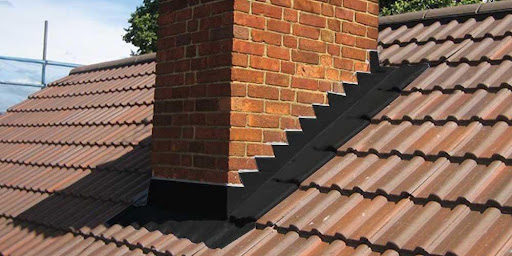
Ensuring Durability and Protection of Roofs: The Benefits of Flashing
Few components are as crucial as the roof when it comes to safeguarding your home against the elements. Acting as the first line of defence, the roof shields your home from rain, wind, and other environmental factors. However, even the sturdiest roofing materials can fall short without proper reinforcement. This is where flashing comes into play. This article looks into its benefits and how it safeguards structures from water damage.
Prevention of Water Damage
One of the primary benefits of roof flashing is its ability to prevent water damage. It is strategically placed around roof features such as chimneys, vents, and skylights, where the roof surface meets vertical structures. These junctions are vulnerable to leaks, which can lead to water infiltration. Over time, water can cause massive damage to the roofing materials, structural components, and interior spaces. By directing water away from these critical areas, flashing ensures that the roof’s integrity is maintained, preventing costly repairs and structural damage.
Enhanced Roof Longevity
Investing in quality flashing extends the overall lifespan of the roofing system. By providing a robust barrier against moisture intrusion, it helps to maintain the condition of roofing materials. Shingles, tiles, and other roofing elements are protected from the detrimental effects of water, ice, and snow. This protection is critical in regions with harsh weather conditions, where roofs undergo repeated freeze-thaw cycles. Properly installed flashing minimises the risk of these elements penetrating the roofing system, enhancing its durability and longevity.
Improved Energy Efficiency
Roof flashing also contributes to a building’s energy efficiency. Preventing water leaks helps maintain the effectiveness of insulation materials. When insulation becomes wet, its performance diminishes, leading to increased energy consumption as heating and cooling systems work harder to regulate indoor temperatures. Effective flashing ensures that insulation remains dry and functional, optimising the building’s thermal performance. This reduces energy bills and contributes to a more comfortable indoor environment.
Protection Against Mould and Mildew
Moisture infiltration can lead to the emergence of mould and mildew, which pose health risks to occupants and compromise indoor air quality. Roof flashing plays a vital role in preventing these issues by ensuring water does not seep into the building’s structure. Mould thrives in damp environments, which can be difficult to remove once established and require the assistance of mold testing in Birmingham, AL, or wherever applicable. By keeping the roof dry, flashing helps create a healthier living and working environment, protecting the building and its occupants.
Aesthetic Appeal and Property Value
Beyond functional benefits, flashing can enhance a property’s aesthetic appeal. Flashing is available in various materials and finishes, blending seamlessly with different roofing styles. Copper, aluminium, and galvanised steel are popular choices, offering distinct visual and performance characteristics. Well-designed and installed flashing improves the roof’s appearance and enhances the property’s appeal. A visually appealing roof can increase property value, making it a worthwhile investment for homeowners.
Compliance with Building Codes and Standards
Using flashing also ensures compliance with building codes and standards. Building regulations often require it in specific areas to guarantee the safety and durability of the structure. Adhering to these codes is essential for new constructions and renovations, as non-compliance can lead to legal and financial repercussions. Properly installed solutions meet these regulatory requirements, providing peace to property owners and builders alike. It ensures that the roofing system is up to code and capable of withstanding environmental challenges.
Roof flashing is an indispensable component of any roofing system, offering numerous benefits beyond simple water protection. Its role in preventing water damage and protecting against mould and mildew highlights its importance in building maintenance. The aesthetic and compliance advantages make it a critical consideration for any construction project. Ensuring that flashing is properly installed is vital to reaping these benefits and safeguarding the integrity of buildings for years to come.


